The App Settings page allows you to configure multiple elements in your app: Signup & Registration settings, choosing your App Language & App Theme, selecting the Payment Method & Currency used in your app, setting up Google Ads, Chat Backup, Chat Labels and Change Request.
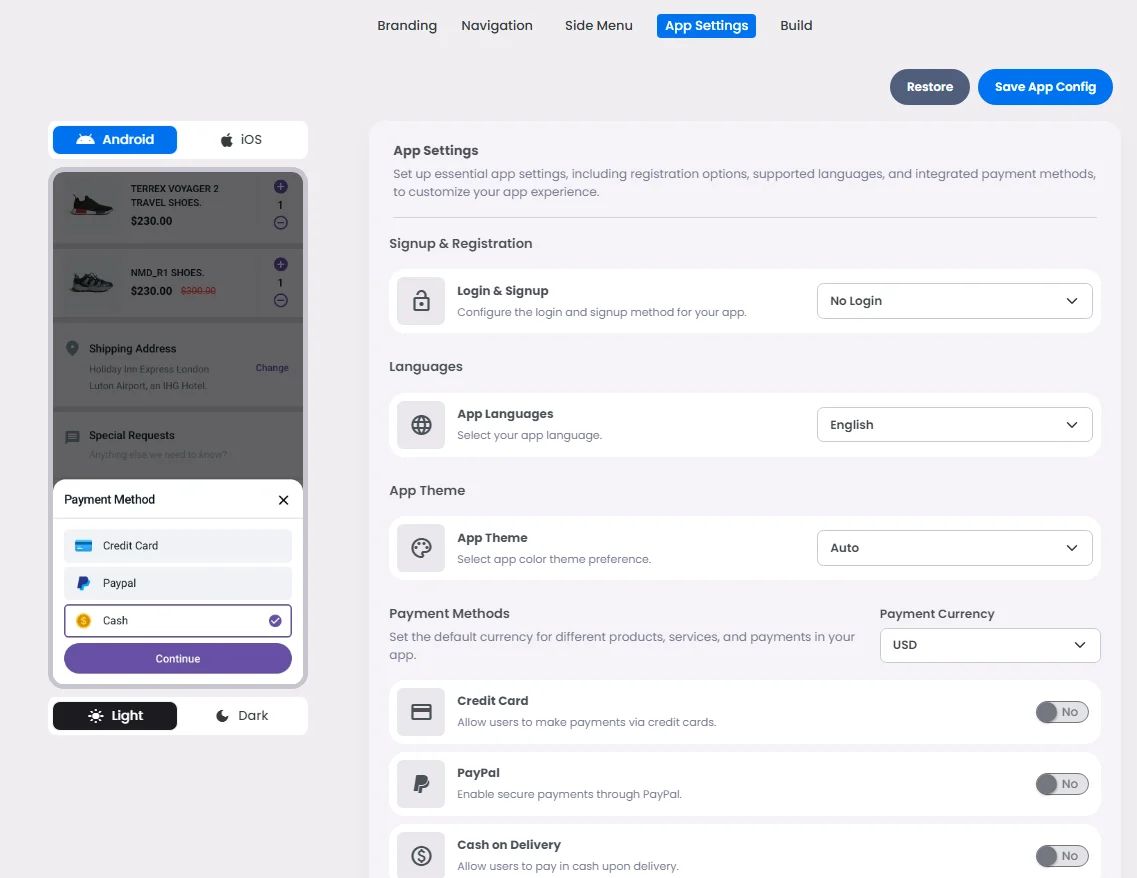
Signup & Registeration
This section allows you to select the method of verification when a user first signs up for your app.
You can choose to verify via email or mobile, or you can skip the verification process by choosing No Login.
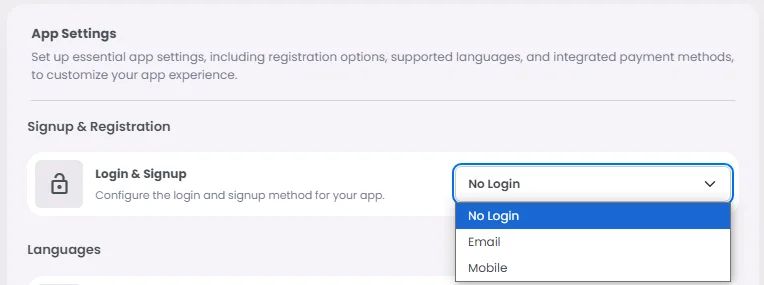
And when you select the login method you want, the settings will open up to configure your login method:
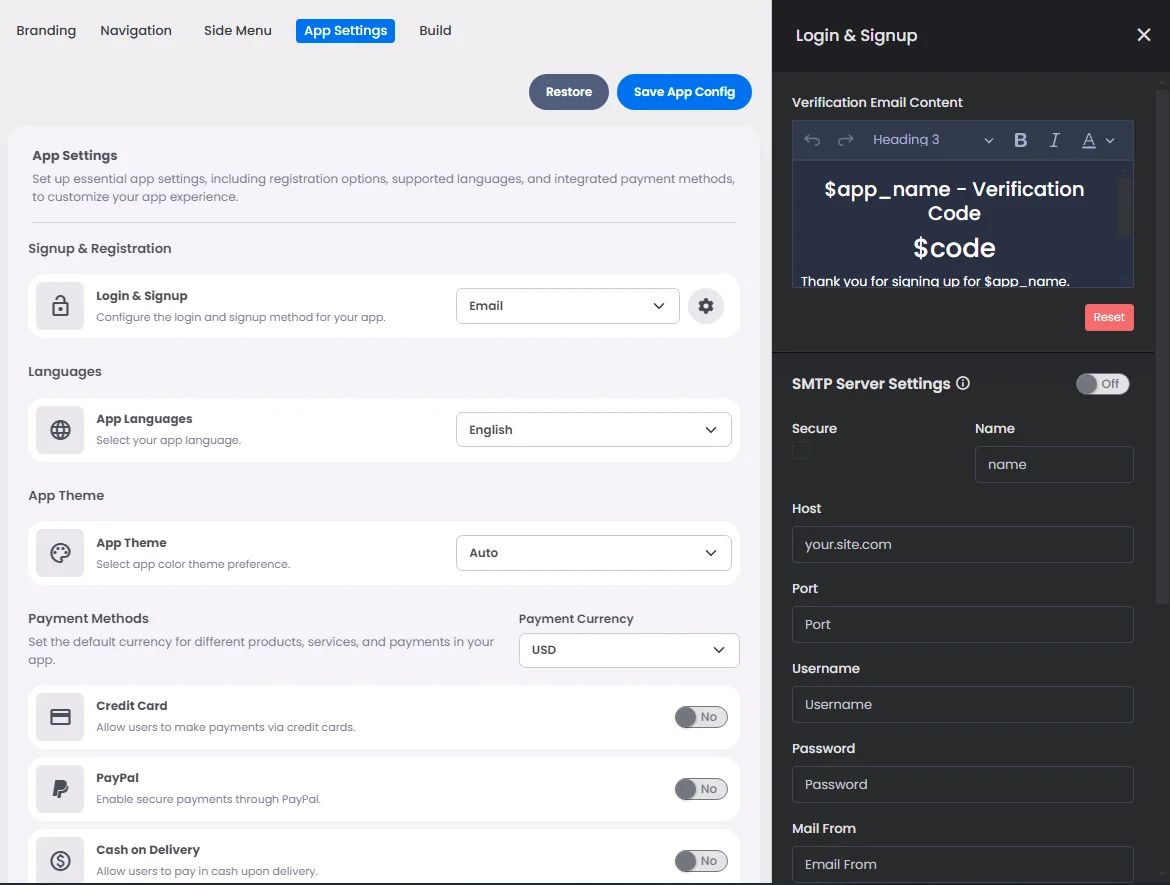
- Verification Message: Use the text editor to add the verification message you want to send to your users.
- SMTP Server Settings: To complete the verification process, turn the toggle on SMTP server settings. Fill in the information and click 'Submit' to use your SMTP server; otherwise, leave the toggle off to use nandbox's SMTP server.
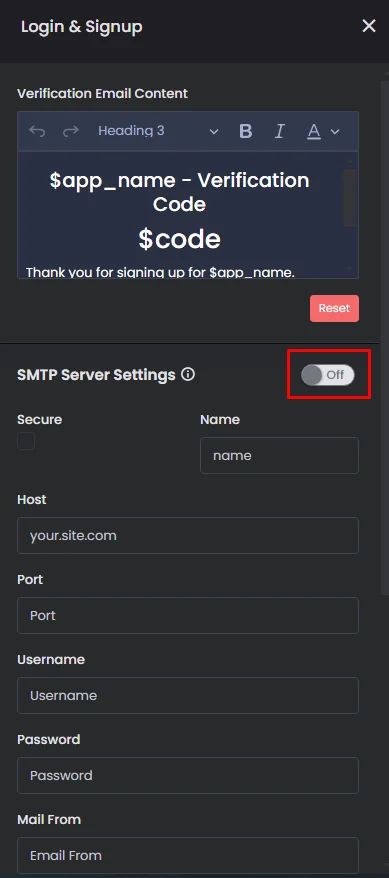
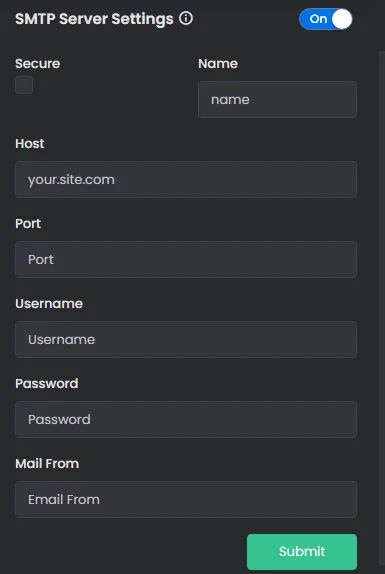
Here is an article to guide you with how the SMTP server works.
- You can allow your users to change the email used in registeration.

Demo Account for App and Review
Before publishing your app on the Google Play Store and Apple's App Store, it must undergo review. In this step, creating a demo account is a must so that verifiers in Google and Apple can use it to access and evaluate your app. Once the review process is complete, your app will move closer to becoming available in the stores.
Your email must be unique and not already registered in the app.
Enter the country and the email address and click ‘Verify’.
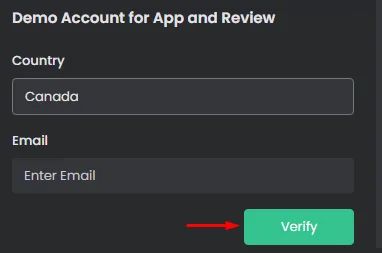
A verification screen will pop up; check your email, enter the verification code sent to you, and click 'Verify'.
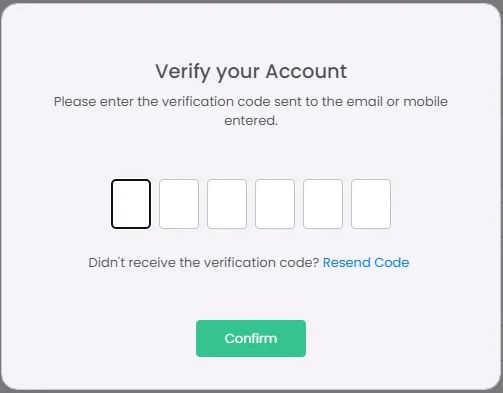
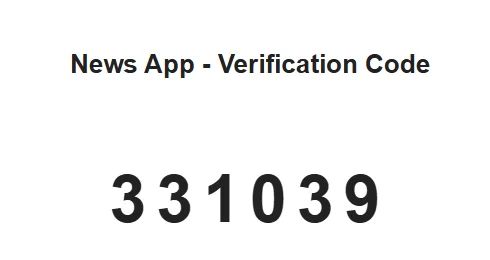
These are the Android and iOS login instructions that Google and Apple will use to access your app for review.
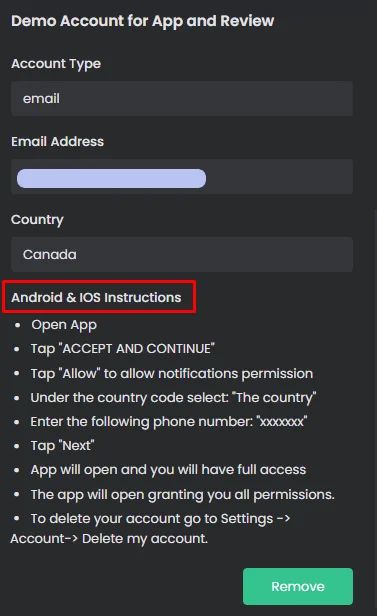
You can also remove these instructions if you want to change the email address.
Check these documents to find out where to put these instructions in the Apple Store and Google Play Store.
Mobile
The same goes for mobile verification. Choose the type of verification message you want to send to your users.
- Verification Message: Enter the verification message you wish to send to your users.
- Vendors: Select one of the vendors: Vonage or Infobip.
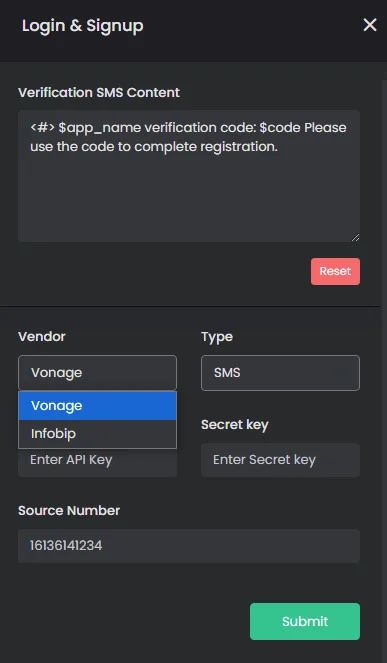
Vonage
If you chose Vonage, click here to create a Vonage account. Once you create an account, you need to choose whether you are a developer or not. Then choose your role.
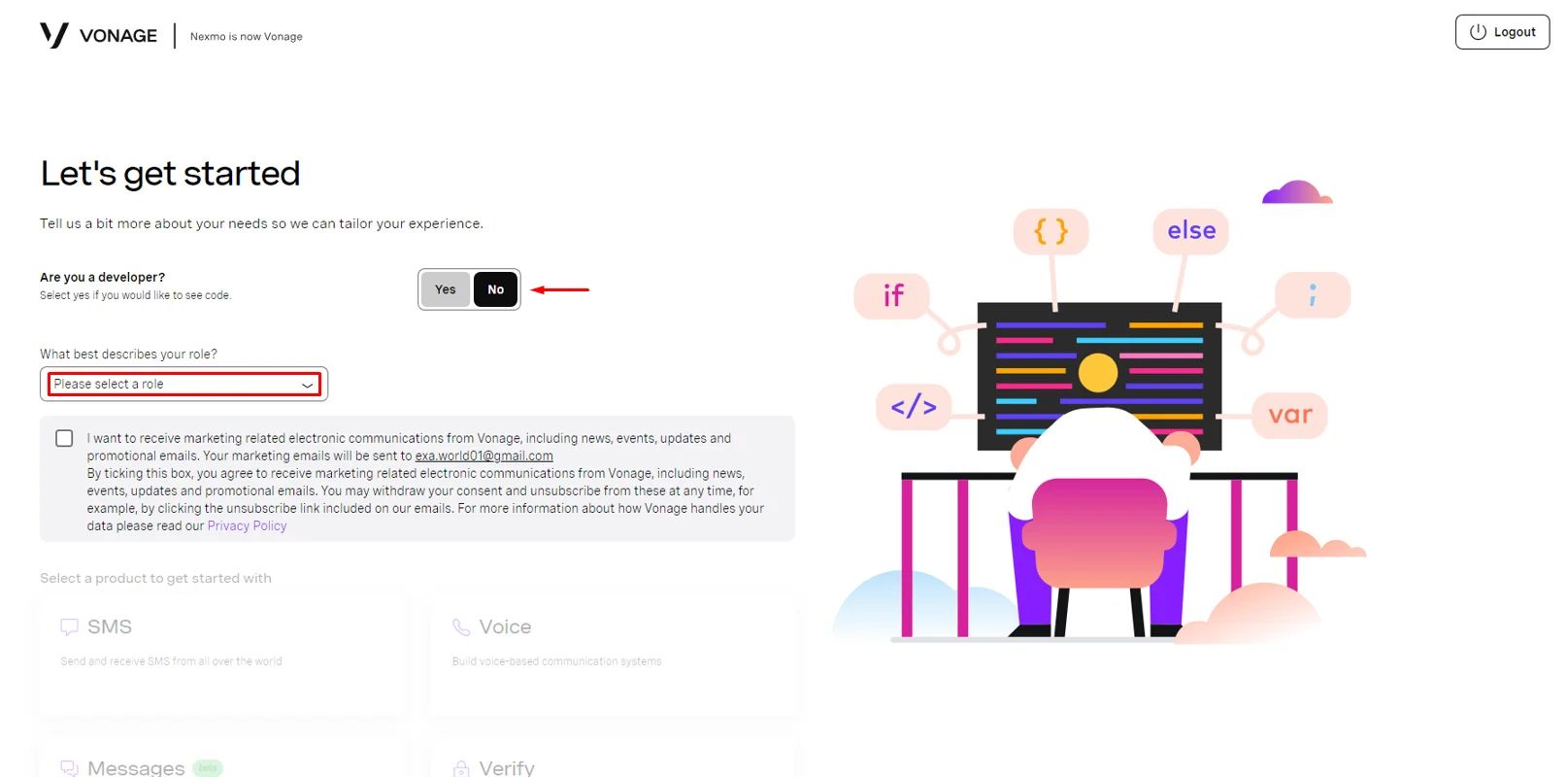
Choose the 'Verify' method.
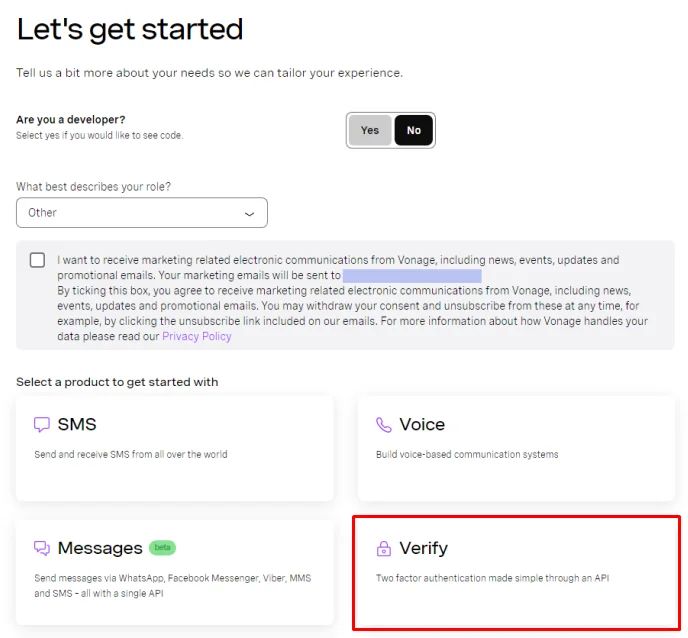
Then, the API Key and API Secret will appear to you.
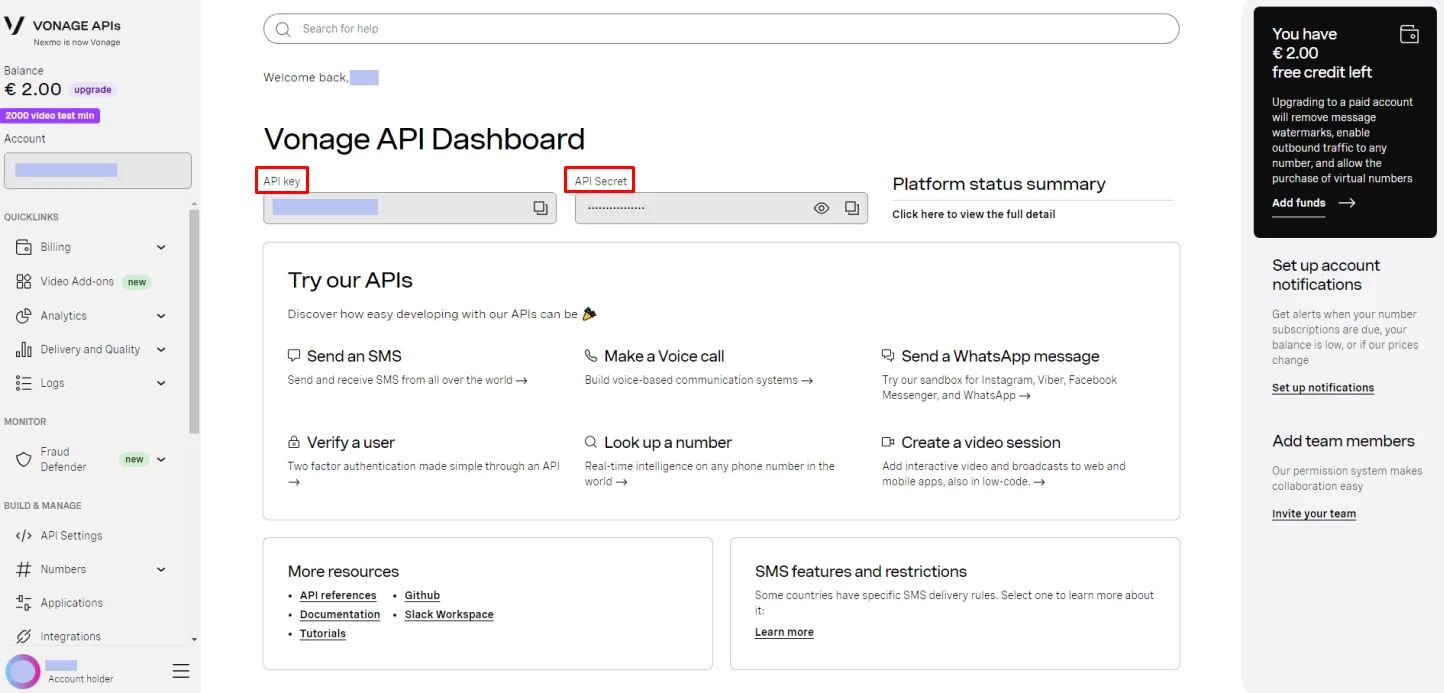
Copy each one and paste it into their respective fields.
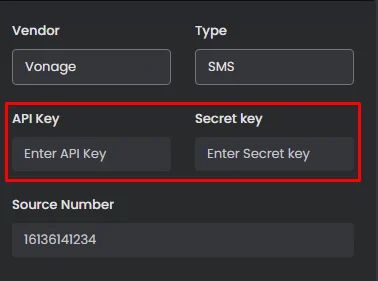
Enter the source number you purchased for mobile login registration. It must include the country code and be formatted without 0, +, spaces, or brackets (e.g., 15551234567).
And click ‘Submit.’
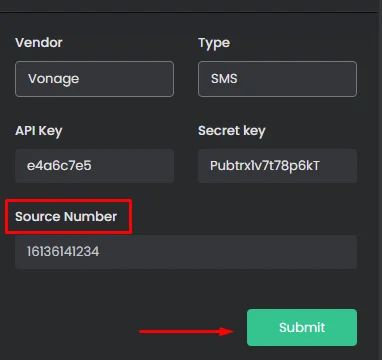
Note that Vonage provides you with a free balance of 2.00 euros to start your testing process.
To subscribe with Vonage, click 'Add funds.’

Click 'Add funds' again.

Then fill in your billing information to upgrade.
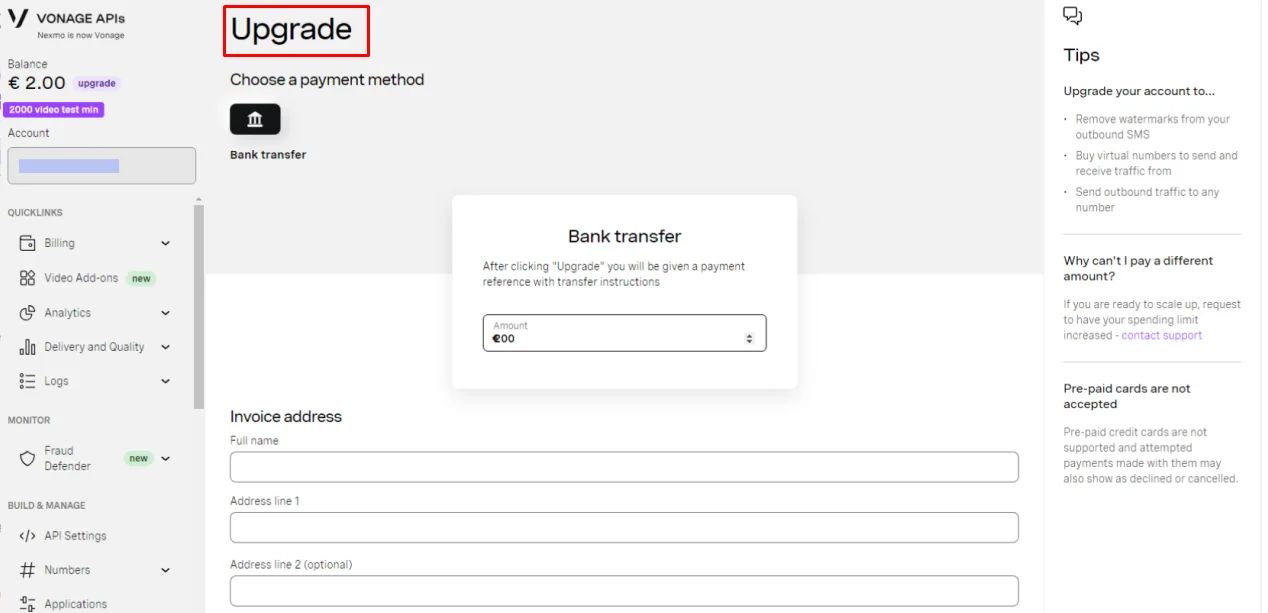
It will take 5 minutes to complete and activate the configuration steps.
Infobip
If you chose Infobip, click here to create an Infobip account. Once you create an account, go to the sign-up steps, then choose SMS in the Customize Your Experience section and click 'Next'.

Then choose 'Authentication' and click 'Next.’
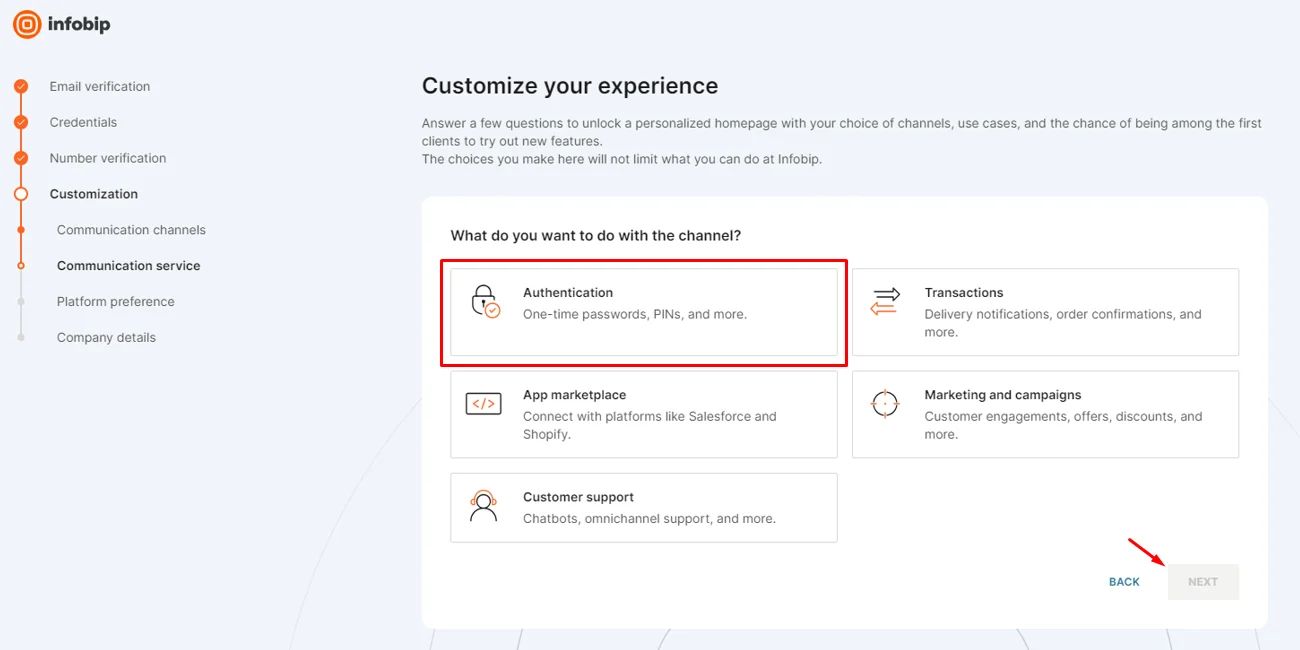
Choose 'By using code (APIs, SDKs).
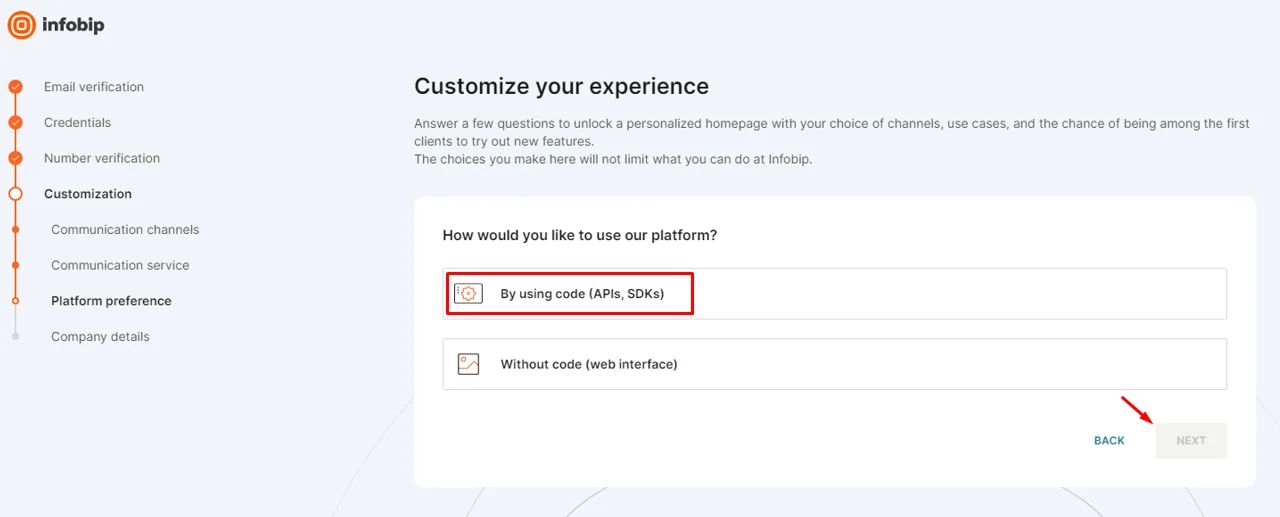
Choose your company category and how many users you contact per month.
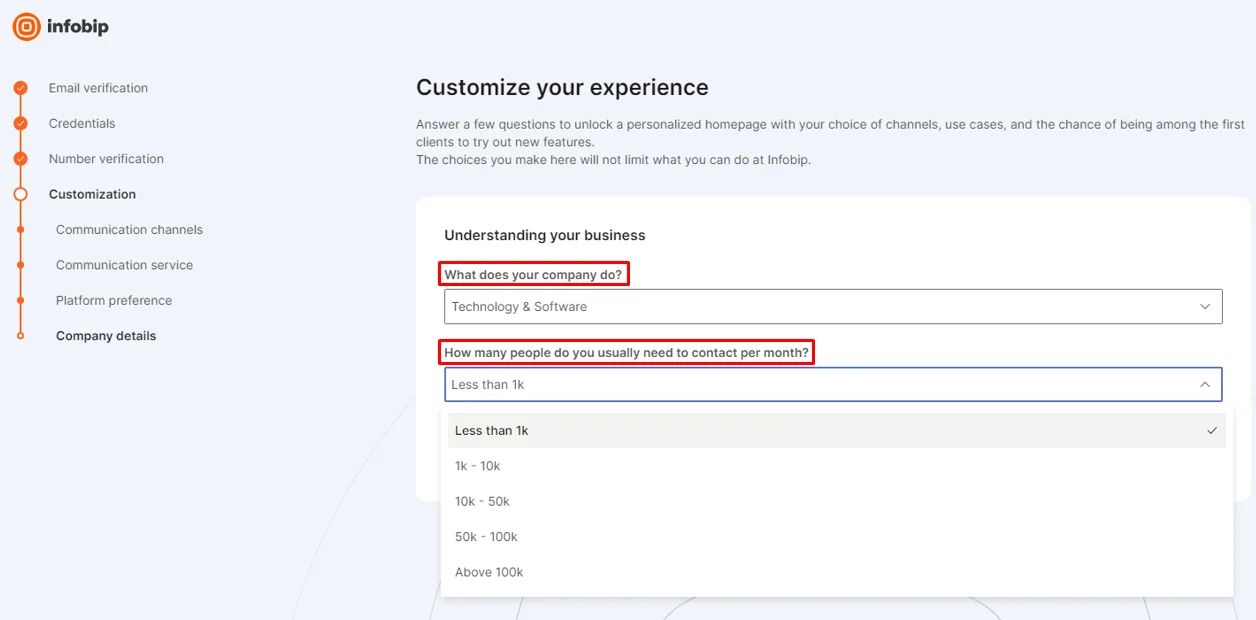
Then a screen will pop up with the API Key and the API Base URL.
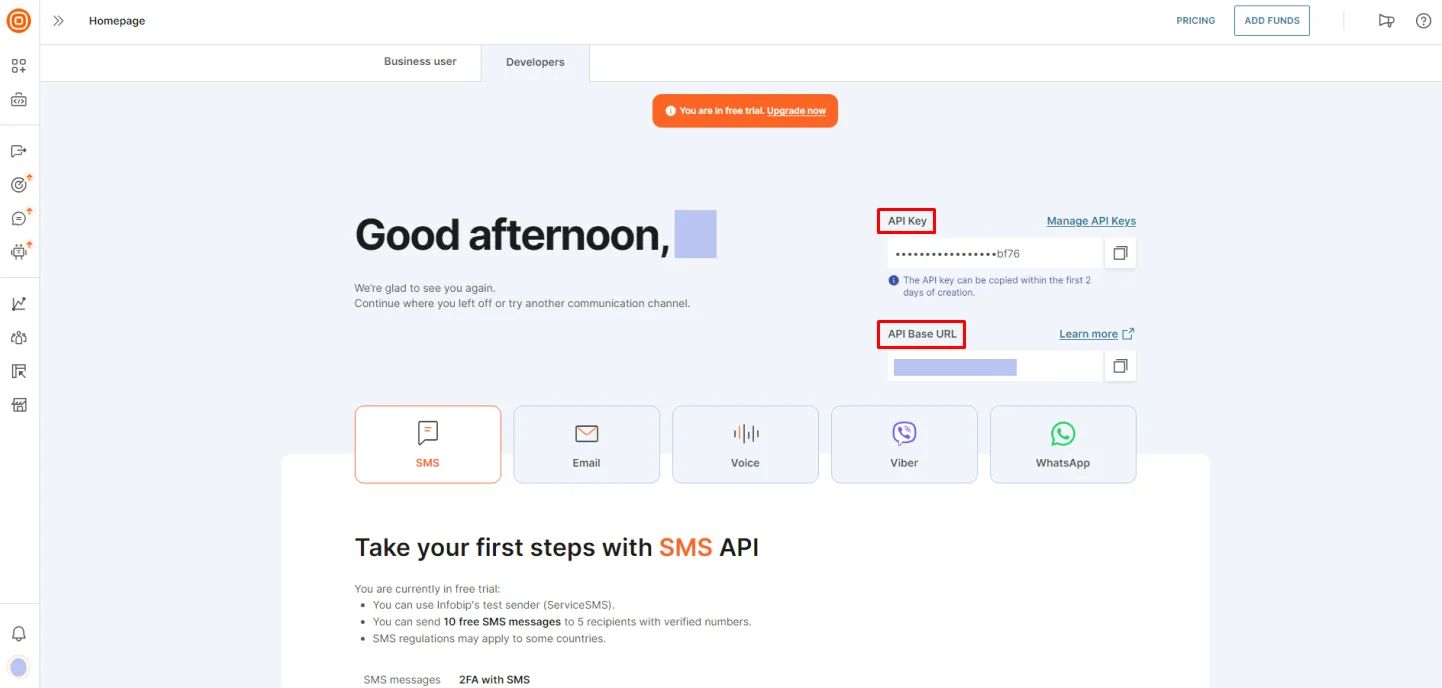
Copy each one and paste it into their respective fields.

Now you need to subscribe with Infobip first to get the verification code. Click 'Pricing.’
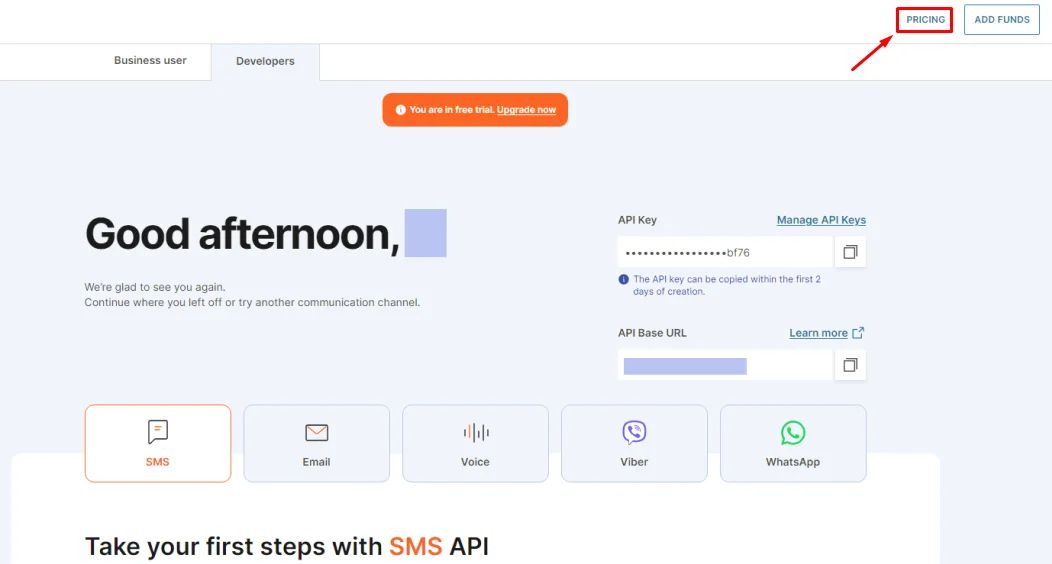
Choose 'SMS.'

You will be prompted with a pricing calculator. You can select your country, control the number of messages, and it will generate the pricing for you.
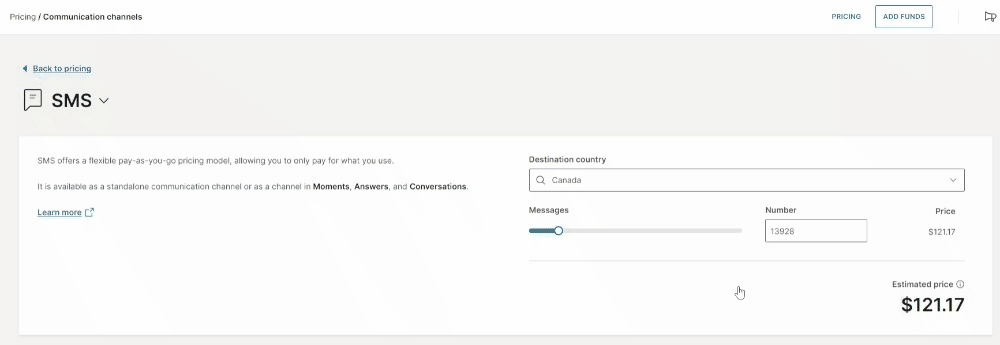
Then, go to 'ADD FUNDS’.
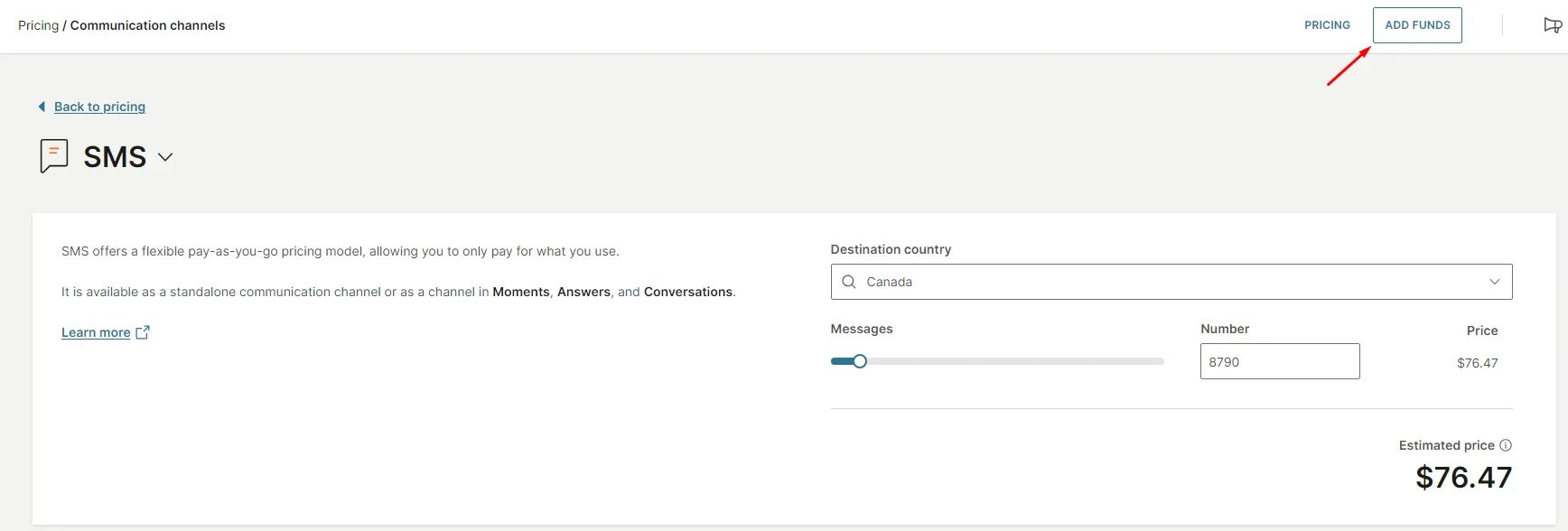
Select the suitable payment transaction for you.
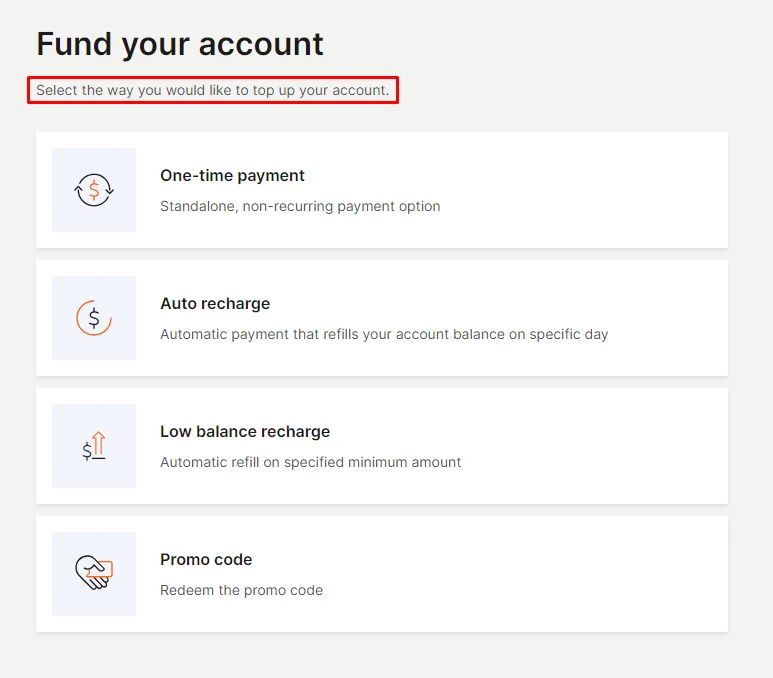
Fill in the billing details, then click 'Submit.'
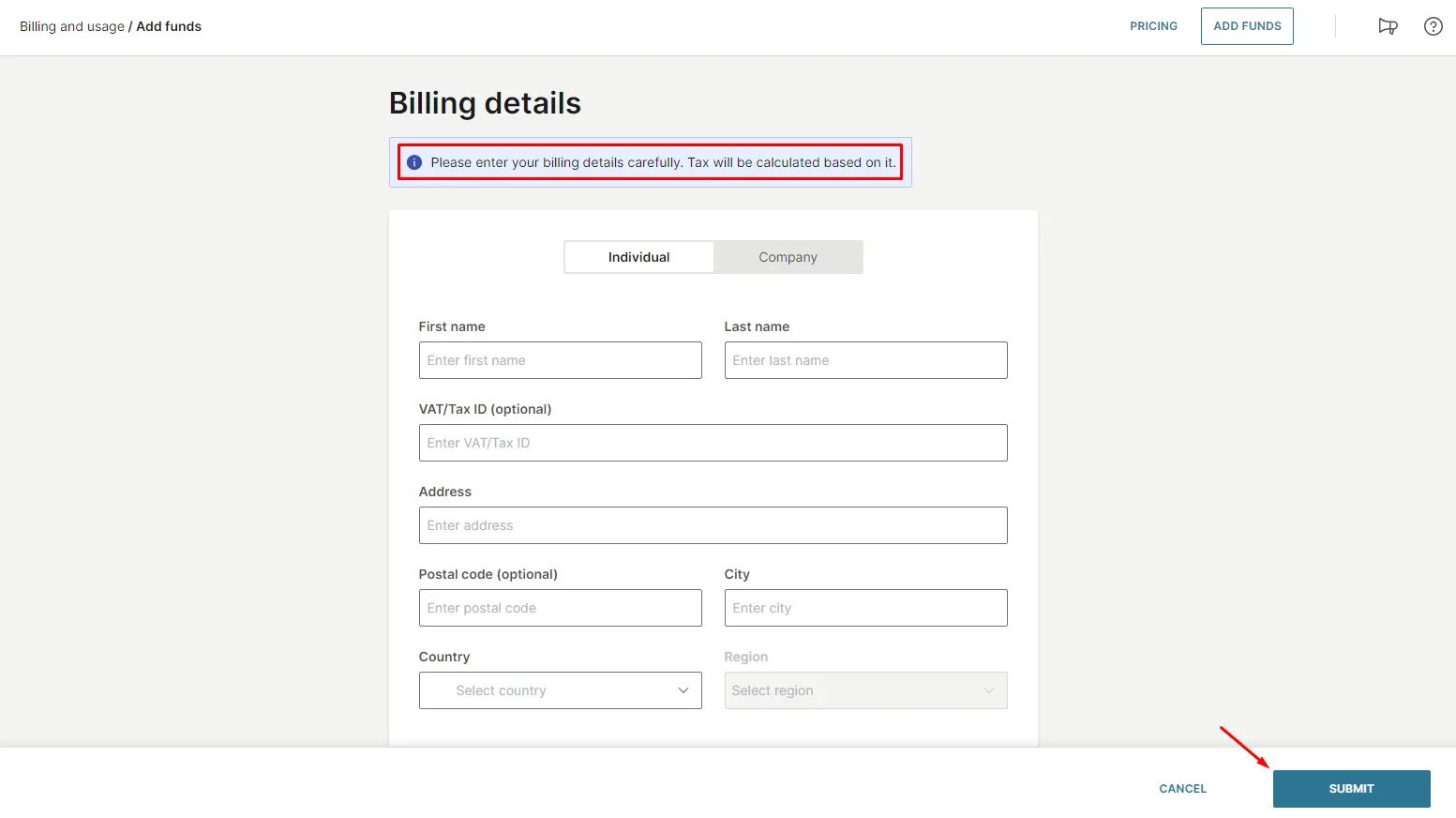
Be aware that the configuration steps will take 5 minutes to be completed and activated.
Demo Account for App and Review
Repeat the same process of the email login method if you want to use the mobile method and don't forget to click 'Verify.’
Ensure that the phone number you use is unique and not already registered in the app.
Languages
Pick the language that your app will support.
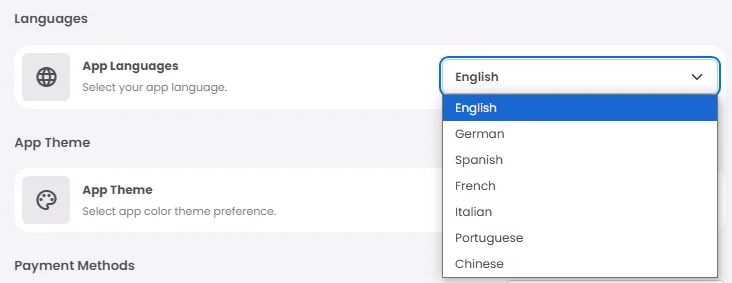
App Theme
Choose whether you want your app to be auto (both dark and light), always light or always dark.

Payment Methods
This section will allow you to choose how your customers will pay for your app. Choose the currency that you want to charge users with, then choose your payment methods:
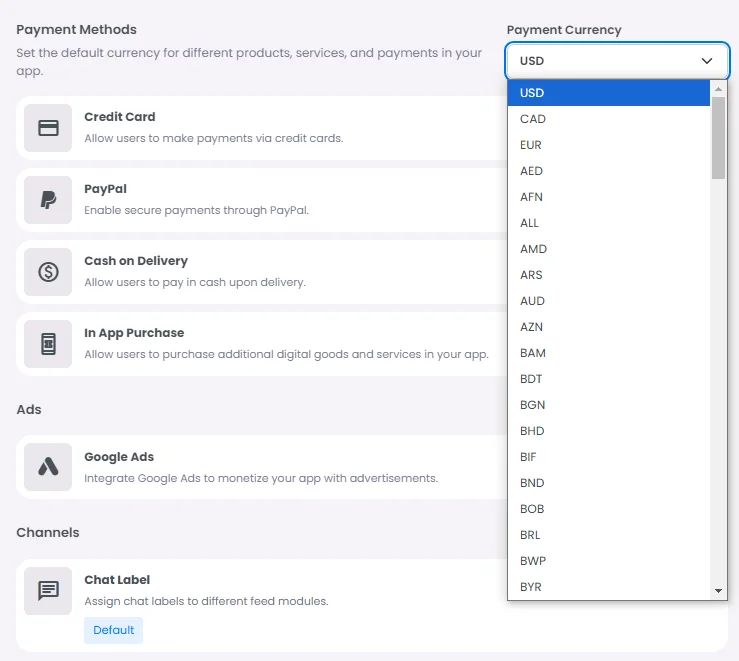
Credit Card (Stripe)
Stripe is one of the major payment gateways that will allow your customers to shop and buy your products using their credit or debit cards.
Turn on the toggle, click the gear icon to configure its settings, and then follow these steps.

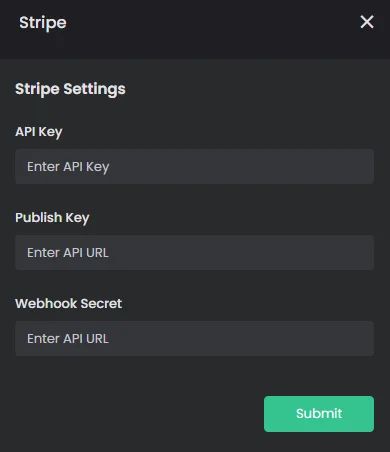
Turn on the toggle, click the gear icon to configure its settings, and then follow these steps.


Cash
If you would prefer to have your payment in person, you can also activate the cash option by turning the toggle on.

In App Purchases
Check out this documentation to understand how to create in-app subscriptions.

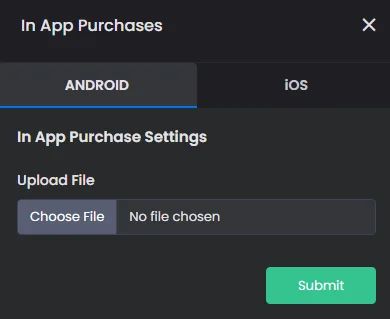
Google Ads
This section will enable you to activate Google AdMob in your app.

- First, create a Google AdMob account.
- From the navigation menu, click 'Apps.’
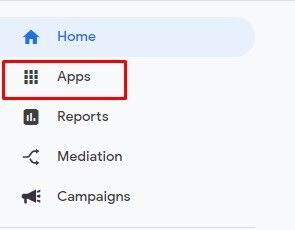
- Click 'ADD YOUR FIRST APP.’

- Select the platform for your app.

- If your app is published on Google Play Store or App Store, select yes; if not, select no.

- Next, enter the app name and click 'Add App.’

- Click 'CREATE AD UNIT' to start creating ads.
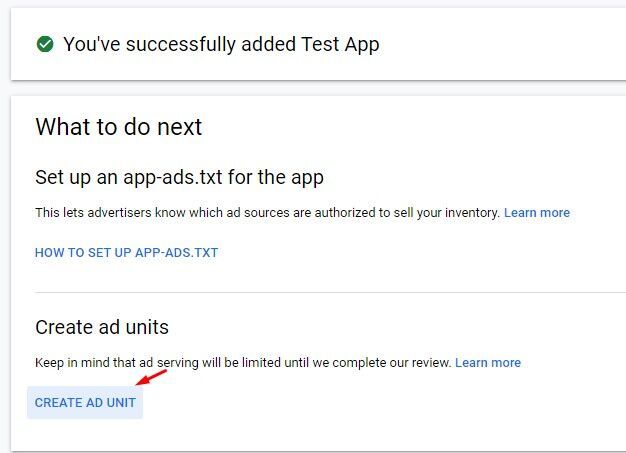
- Next, select the ad type. Currently, nandbox app builder supports the Banner and the Native advanced format.

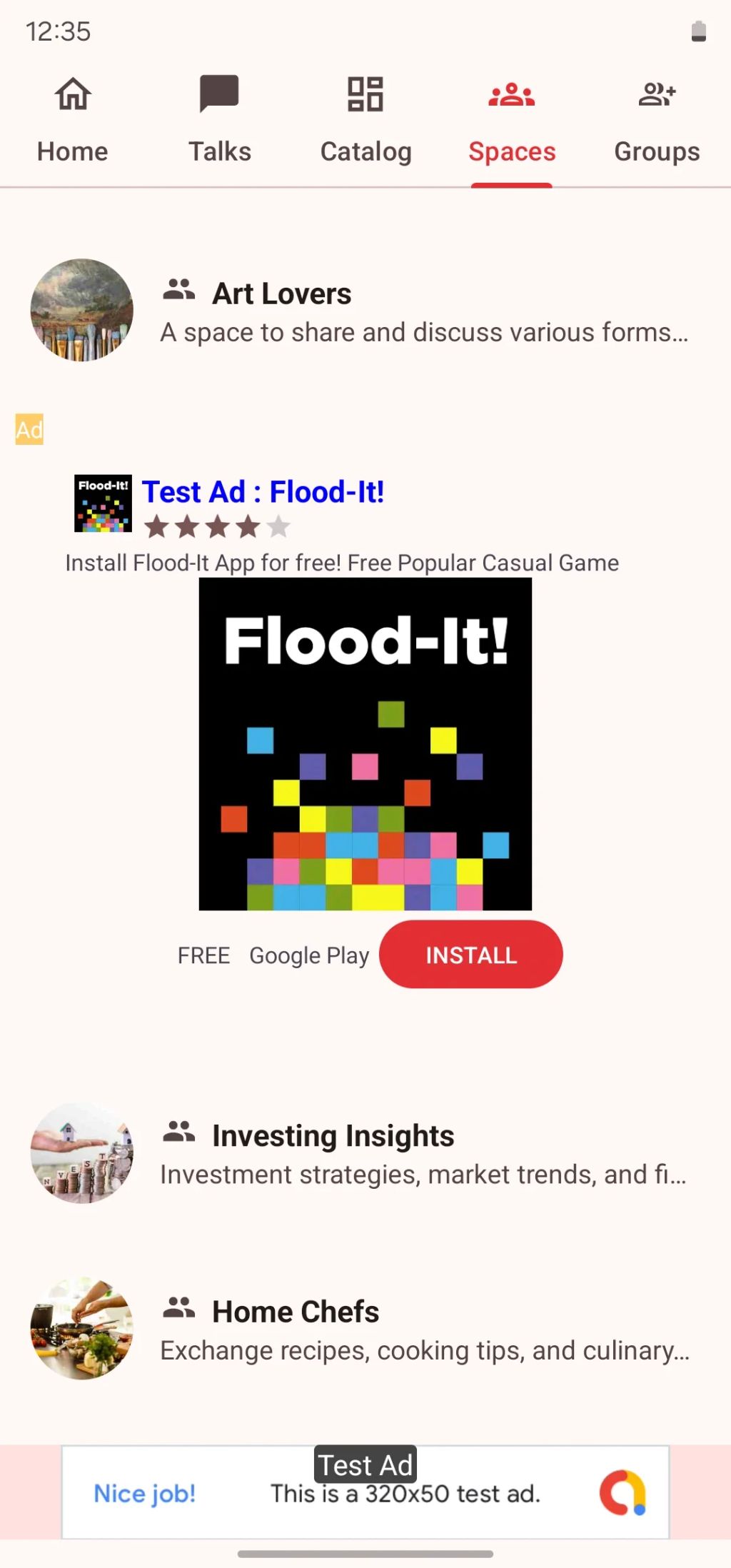
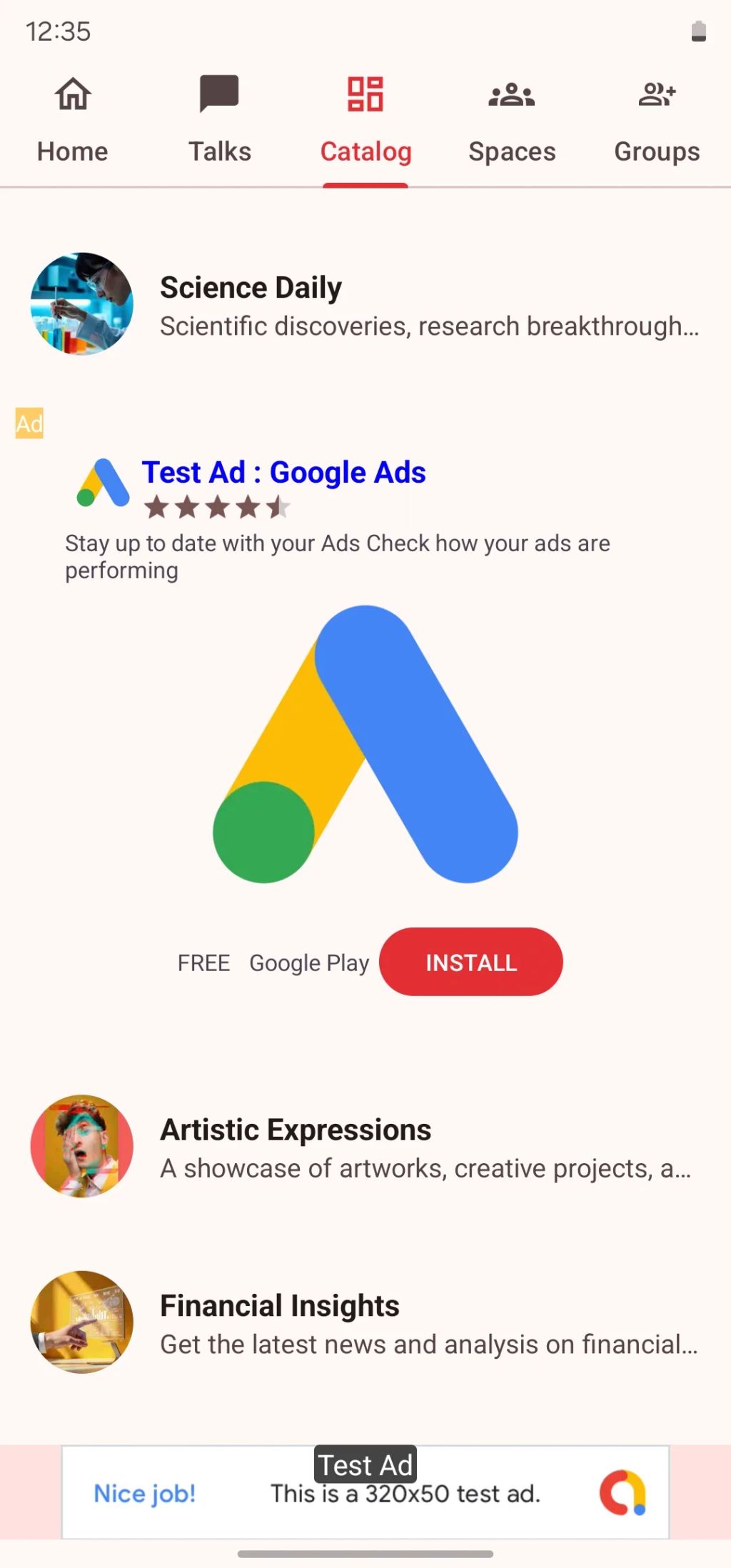
- Click the banner type, enter the ad name, and click 'Create ad unit.'
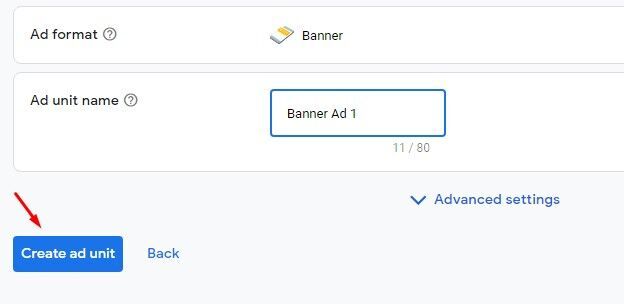
You will be prompted with two keys.

- Now go back to the Google Ads section to fill in the configuration.
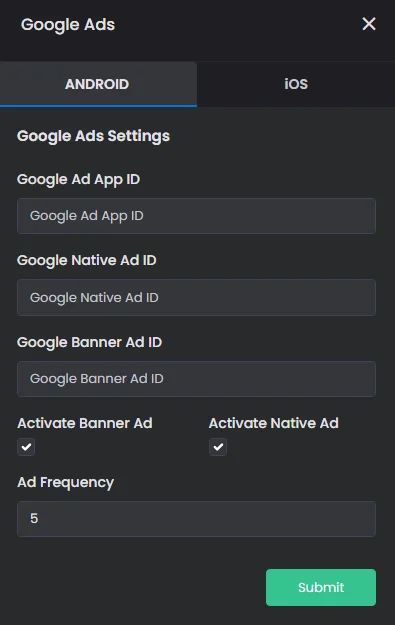
- Copy the first key (Google ad app ID).
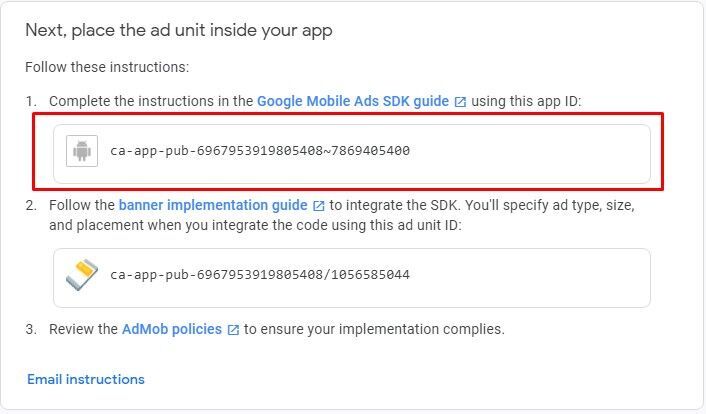
- Paste it in the Google Ad App ID box.

- Next, copy the second key (banner key).

- Paste it in the Google Banner Ad ID box.
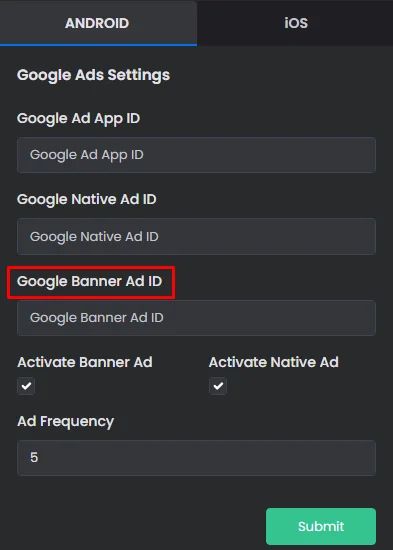
- Next, click ‘Create another ad unit.’

- Select Native advanced.

- Enter the ad name and click 'Create ad unit.’
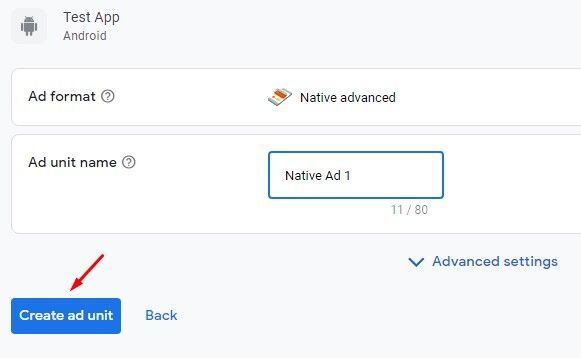
- Copy the second key (native key).
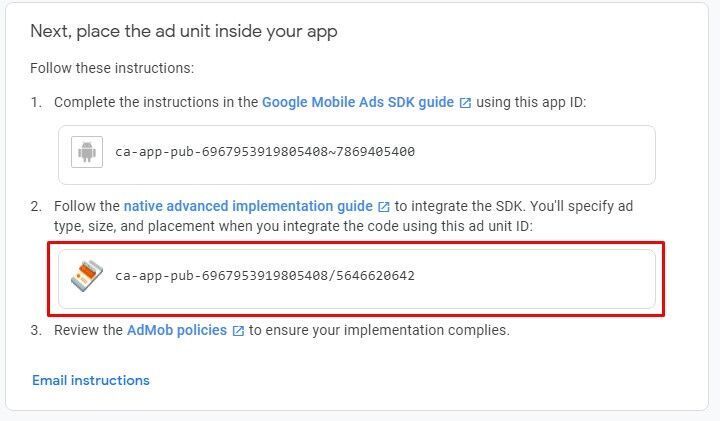
- Paste it in the Google Native Ad ID box.
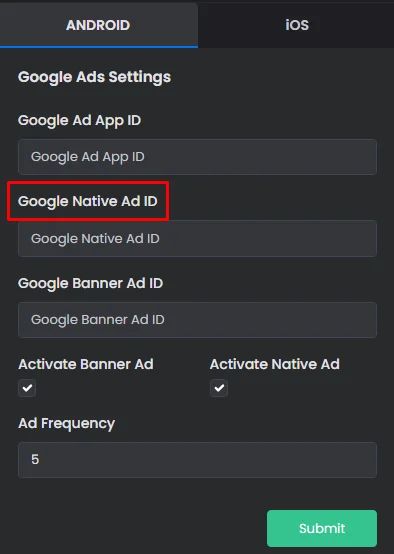
- Next, check the box of your preferred ad you wish to activate, enter the ad frequency, which is the number of posts after which an ad will appear, and then click 'Submit.’
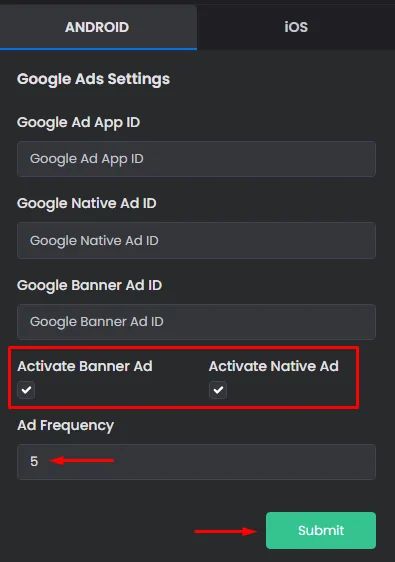
You can repeat the same process with the iOS version of your app.
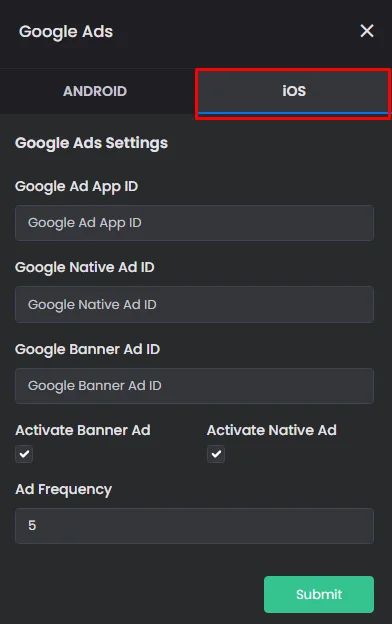
Next, you need to activate the ads in the components that you've installed in your app.
- Click the gear icon of the component.
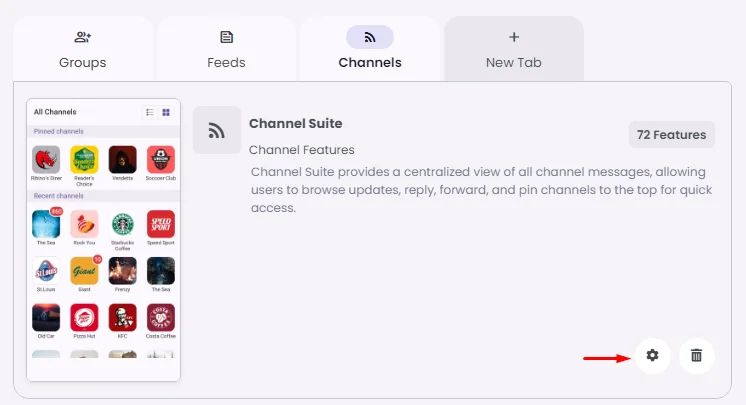
- Turn the toggle of 'Enable Ads' on and don’t forget to click ‘Save App Config’.
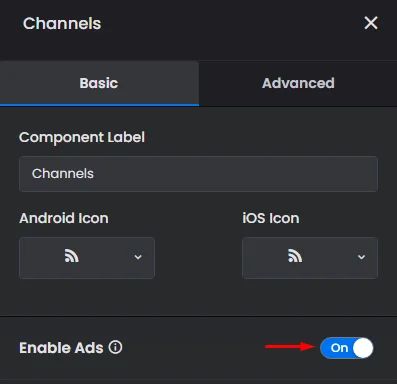
Chat Backup
You have the option to activate the chatting backup feature for Android only, iOS only or both of them.

Channels
Chat Label
This option is related to assigning specific posts to a feeds tab based on its label if your app has numerous feeds components. Click ‘+.’

Then start to add your labels, and you can add more by clicking the + icon or delete them. You can also click ‘SET’ if you want a specific tab to be your default tab.
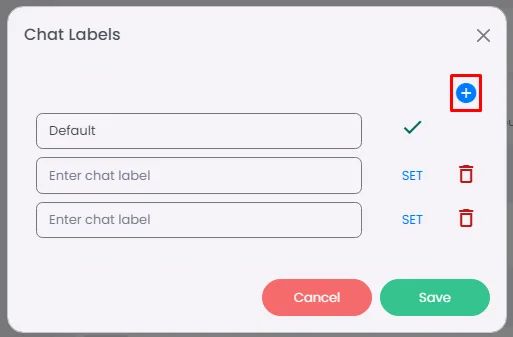

Now go back to your feed tabs and assign your labels.
To prevent confusion, make sure your app has two Feed Centers and rename them according to their chat label names.
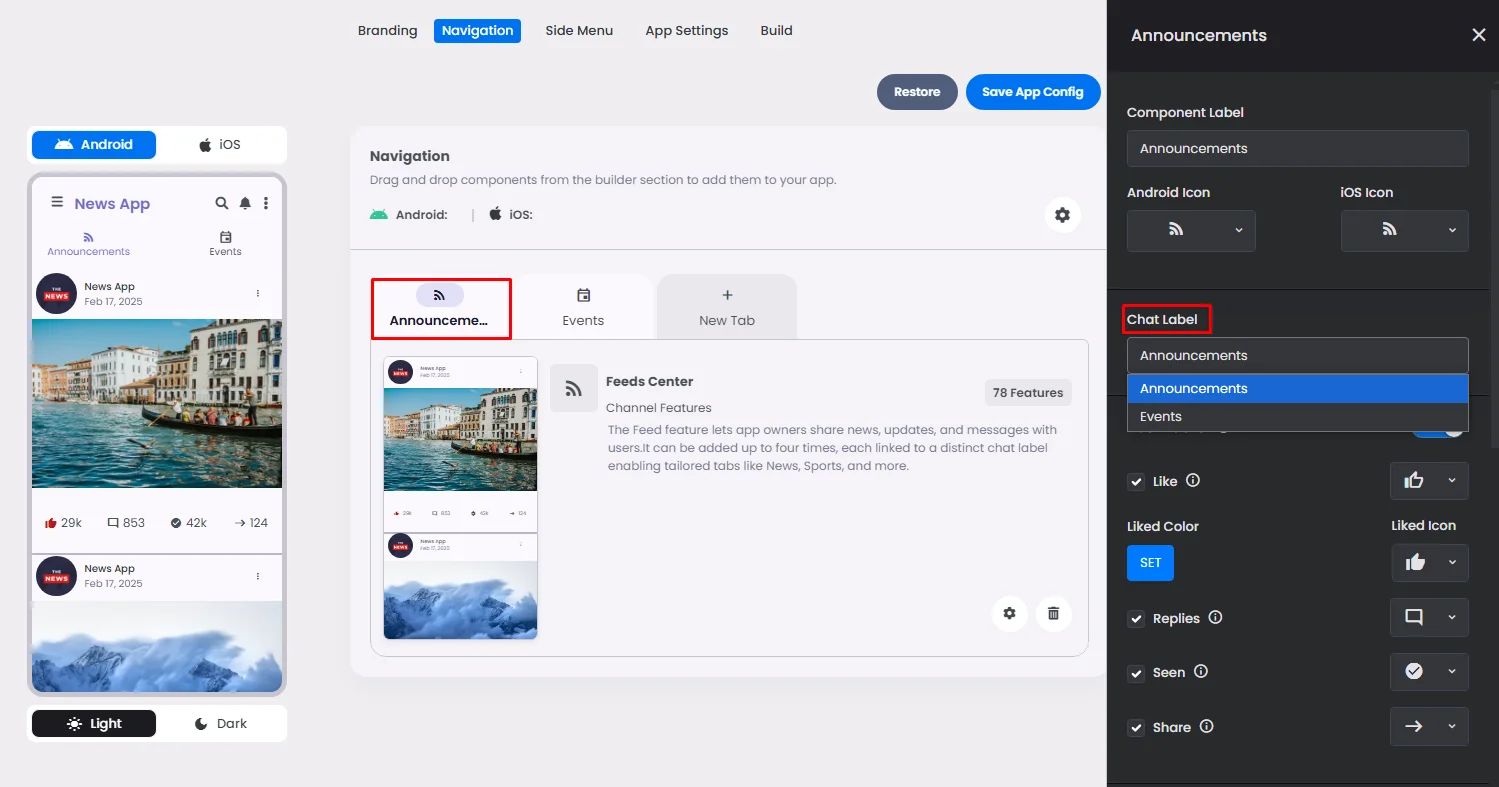
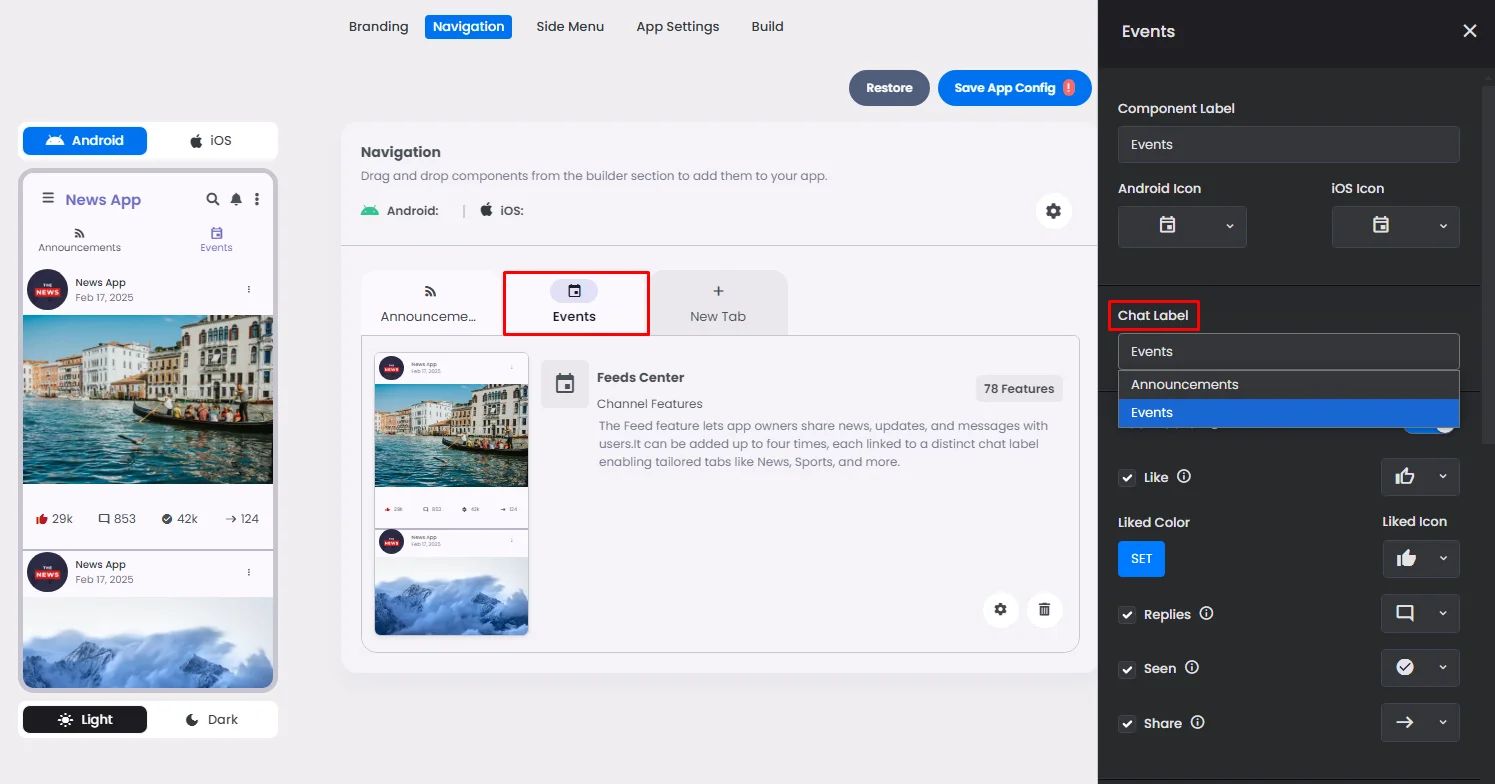
When you create a post, you will find the chat labels you created. If your app has more than one section and each one has its type of post, this feature will help you prevent confusion.
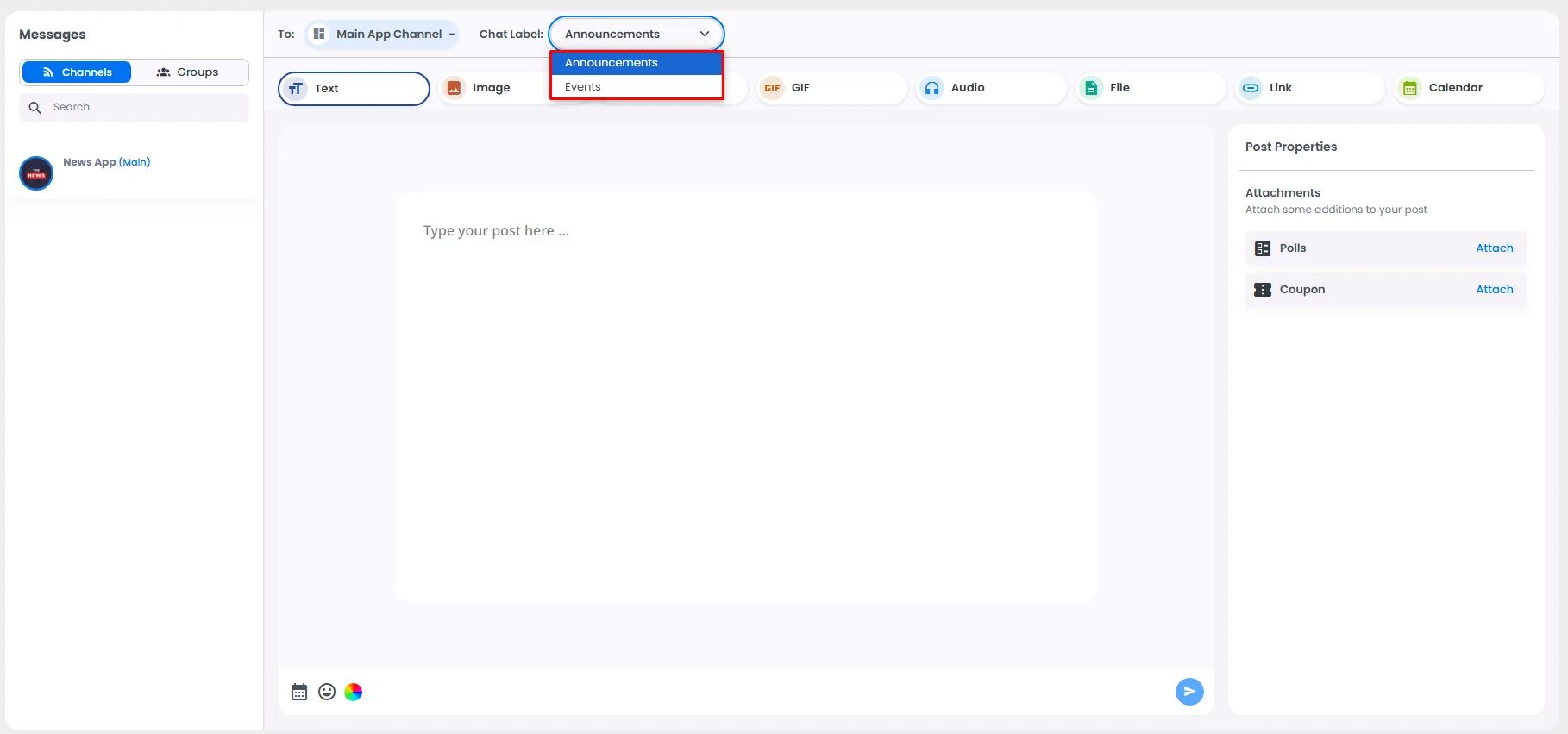
Change Request
You can always email support@nandbox.com to make changes or ask for specific customizations to be made to your app. Your request will then show up here.

